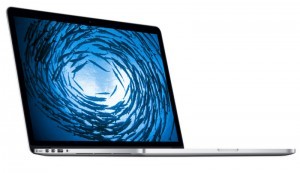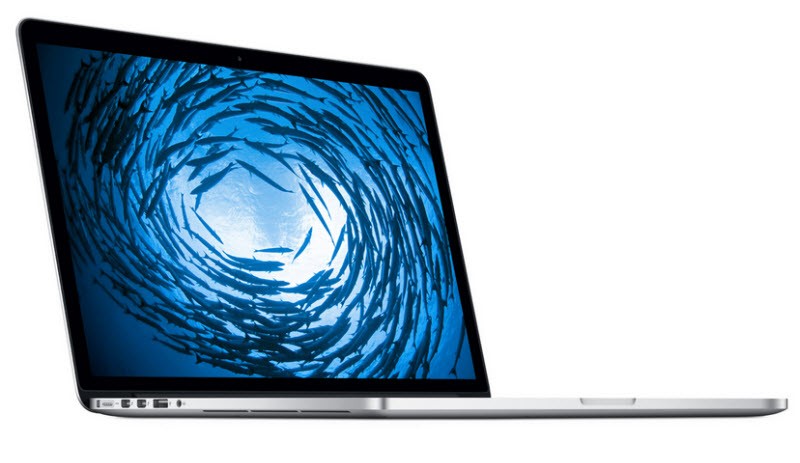
After more than two decades of being a dedicated graphics power user, someone who over that time has polished and finished tens of thousands of images and video clips while desperately waiting for Mac and Apple to deliver an effective stylus to supplant the crippled Apple mouse and touchscreen operations that proved so successful on Apple iDevices –
I’ve now all but given up on the Mac platform.
It might sound odd, but writing these words actually makes me sad. I devoted nearly 10,000 days waiting, desperately hoping for the Mac platform to reach the promised land of graphic performance and capability so easily embraced by Windows. Wandering in the desert of Motorola chips and then being cutoff by Steve because he had to go to IBM’s Power PC chip leaving a trail of useful programs behind. And then again Steve had his Mac troopers migrate quickly to Intel chips so that Apple Macs would never fall behind Windows machines but at the cost of more lost programs. I had endured but now Apple Macs would be as good as gold and Microsoft PCs.
But even with identically the same hardware, Macworld had to concede 3 years ago that Apple Macs could not match the graphics speed of Windows PCs. And Gigaom admitted this year that things have not changed – Windows high end PCs clearly outperform Mac Pros not just in graphics but overall performance benchmarks.
I knew and still know how Apple can make Apple Macs work better.
It is simple – use better graphics chips, add a pressure sensitive stylus, and bring touchscreen operations to Macs. But once again Maverick and the Macs disappoint on all 3 winning features. So I carry out my day-to-day work on a variety of Windows machines which since Windows 7 never go down. I use Android tablets and smartphones for playing games and communications, but even there Nokia handsets and tablets are like a Siren lure back to Windows for mobile devices too. Now I barely give my iOS devices a second glance as Android, Linux and Windows all outperform, cost less, run just as well and have just as many mobile apps and a ton more desktop programs than their Apple counterparts.
My primary work system is a Windows 8 laptop. In the ten months I’ve had it, Windows 8 has flawlessly done everything I’ve asked of it. This means running graphics like Adobe Photoshop, Lightroom, and Premiere Pro to Xara Designer Pro, ArtWeaver and Camtasia Studio through to XAMP Apaches server and Netbeans Developer plus a host of other state of the art Web tools and databases from MySQL and Oracle to PostgreSQL and NoSQL. I’ve lost count of the number of notebooks, tablets and smartphones I’ve owned over the years, but this ordinary Windows 8.1 Acer Aspire V5 is, by far, the most reliable system I’ve owned.
Sure, I’ve waited like Charlie Brown for Apple not to do a Lucy on MacOS X 10.9Maverick but to finally deliver touchscreen operations – no such luck. And to amazement in the pundit community, the new iPads failed to deliver a clip-on keyboard option nor USB 3 nor Bluetooth 4. In sum no hybrid tablets from Apple. I’ve put an awful lot of hours into wishful thinking, but I see nothing in the new versions of Macs and OS X that excites me sufficiently to tempt me back into buying either an iOS or a MacOS machine. If anything, the effect has been the exact opposite, confirming my belief that staying away from Apple has been the right thing to do.
So what’s brought me to this point in my tech career?
Dashed Hopes Fatigue
Because I am in Web Design and Development, I’ve spent almost my entire adult life working around and with Macs. And the more Macs you are around, the more sick and tired you become of finding Apple coming up short in some way but especially program software. “Well this program used to work on Power Macs” but now you are ship out of luck. And this App runs in iOS iPad – but not in Mac except for a subset of features the most important being no touchscreen operations. Swiped by Apple so to speak. Net result, for a broad range of graphics, scientific, and business programs the only game in town is Windows. And Apple has conceded as much and lets Windows run as a virtual machine on Apple Macs so users can get the full range of programming applications.
I’ve also cajoled and coaxed countless ailing systems back to life. But during that time I’ve come to realize how proprietary Mac OSX can be both in hardware as well as software. There is a reason that gobs of peripherals that work perfectly well on PCs are unavailable on Macs. Often it is something not working in the Mac OS/X operating system. But just as often it is how something small and insignificant as a bad driver, incorrect settings, or the proprietary stars and connectors being deliberately put in the wrong position which can bring a system to its knees, deny connections, and result in hours of work searching for a solution. That’s great if you’re being paid by the hour to solve Mac problems, but if your dealing with your own systems, and you need to be productive – count on Mac OS/X tripping you up in many frustrating ways.
Same for software. Take Apple QuickTime – this is Apple’s Adobe Flash wannabe. At the very same time as Steve publicly puked with half-truths and less all over Flash, a)Apple was still holding behind the MacOS software APIs that would have allowed Adobe to fix Flash on Macs and iOS and b) QuickTime, even with this advantage, had a worse speed of performance record, worse security record and just as bad reliability as Adobe Flash.
In the years since, Quicktime has languished and Apple has still not produced software of equal value to Flash on either iOS or Mac OS/X operating systems. And iOS still does not support open and cross platform development software like Mono, Lua, Unity 3D and many other tools. Apple has erected a proprietary tools barrier around iOS and increasingly around Mac OS as well.
This is evidence of the ultra proprietary direction Apple has embraced over the past two decades. Proprietary hardware and software is Apple’s barbed wire barrier to migrating from their platforms. There is a reason Flash, Java, Lua, Mono and other cross platform tools have had to be weaned off first iOS and now Mac OS/X – they provide a software escape hatch if one wants to migrate off Apple systems and software. Leave alone the ideal of developing in one language for many different OS and hardware environs.
Proprietary for the sake of no-change
One of the biggest problems I have as a developer with Apple , Mac, and iOS software and devices is that they have raised proprietary to a new level of incompatibility with everything else. Objective C is an Apple-only system programming language. Adobe Flash is not allowed at all on iOS except through Adobe Air. And like Java, both are being weaned off of MacOS and iOS. But there are many admin admittance certificates and proprietary extensions required to make both Air and Java apps work effectively on Apple hardware and operating systems.
Now I am under no illusions – Microsoft Windows is also a highly proprietary operating system. Though Microsoft supports popular development languages like C, C++, Pascal, PHP, Flash, Lua and even Java after paying a $2B fine for effectively wrecking Java momentum with proprietary J++ and an obsolete JVM – there is no doubt that Redmond erects many proprietary barriers in Windows as well. Thus, there are Windows-only configuration languages like XAML and support libraries chock full of “easy to use” proprietary extensions or delayed, incomplete or missing routines from its programming libraries. Developing applications for cross platform that can run in Windows, Mac, Linux and maybe Android is a Herculean task. This makes great cross platform tools like Digia Qt and Unity 3D so valuable.
Proprietary for the sake of major profits
But the real menace in Apple’s ultra proprietary strategy is what Apple has done to developers, computer store retailers and the broader tech markets. One can only buy iOS apps at Apple’s App Store- no place else. Apple insists this is done to enforce standards and security on iDevices. 3rd party iOS Developers see it as a revenue grab as Apple takes 30% of the selling price on all items sold on the App store. And developers also have to toe the Apple line on what price range their software must follow.
The repercussions on the computing industry are immense. Apple is now trying to impose a Mac Store on Mac software developers. And Microsoft and Google have seen the dollar signs and are providing the same type stores like Windows Store and Google Play which extract the same 30% taxes for every sale on their sites with only slight variations.
Every major consumer software vendor has had to take this development into account. Adobe has switched to an Adobe Store model and annual pricing. This puts all of Adobe’s popular design software on a monthly or yearly fee. There are various bundles avaialble but the packaging and pricing has changed just about each quarter. In general, software vendors cannot afford to lose 30% of their revenues to the major operating system vendors.
And the proprietary tactics have brought a financial bonanza to Apple. With one of the highest gross profit margins of 38% in the computing industry, Apple has accumulated $156B in cash and investments even after paying $10 billion in dividends. No wonder Microsoft and Google are now in the Store and hardware businesses in a major way.
The bottom line
The bottom line is that outside of a few edge cases, Apple Macs aren’t for me. If it works for you, then that’s great. Stick with what works for you. I for one certainly won’t sneer or look down on you or go all fanboy. Nor am I under any illusion that Microsoft or Google are distinctly better behaved. Look how quickly both have adopted Apple’s confiscatory Stores and other proprietary tactics. Look how aggressively Microsoft continues to try to impose its proprietary standards on users while 10 years later still falling short on implementing W3C Web standards.
No, what I and many consumers are forced to do is play Dodge Ball among the 3 Major Computing Titans. Looking not just at what deal is being immediately offered but how it might effect computing costs and effectiveness over the next few years is essential. Right now Apple and Mac OS with its premium prices and lack of compelling features [Cupertino, think touch screen, flexible notebook positions, and pressure sensitive stylus] is low man on this consumer’s totem pole. But if Microsoft continues to fail to integrate the Metro and Desktop UI interfaces and to short-change W3C and other Web standards,hey Google Chromebook or Apple Macs might rise to the top for awhile.
Can I see a time when I might go Mac ? Sure – but not right now.
References:
Thanks and kudos to ZDnet’s Adrian Kingsley-Hughes for providing the template for this Elegy to Macs That Might Have Been

